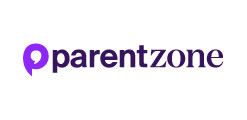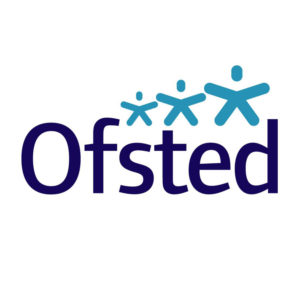Chapter Contents
- Required Checks and Installations
- Danger Signs – Electricity
- Danger Signs – Gas
- Heaters and Fireplaces
- Tips to Reduce Risks
Required Checks and Installations
- Gas boilers and portable gas appliances must be serviced annually by a Gas Safe registered engineer. We will ask to see evidence of this check when you have your annual review. If you are a tenant, your landlord is responsible for the gas safety check. They must provide you with evidence that the gas appliance is safe.
- We will ask you to install a carbon monoxide detector.
- Alternative heating appliances (e.g. those that use coal, wood, or oil) must also be serviced annually by an approved tradesperson. Again, we will ask to see evidence of required checks when you have your annual review.
- Chimneys must be swept by a qualified and approved professional chimney sweep. This should be done at least annually, and in line with professional recommendations depending on choice of fuel.
- Landlords are also now required to have an electrical safety check every five years. We do not routinely require foster carers who own their own home to obtain such a check, but you may choose to do so or a foster child’s placing local authority may require it.
Danger Signs – Electricity
Watch out for hot plugs and sockets, fuses that blow for no obvious reason, flickering lights, scorch marks on sockets or plugs. They are all signs of loose wiring or other problems.
Check that appliance plugs are securely intact. If the coloured wires are visible, not only could they be pulled loose but water and debris could get inside the plug.
Check the power leads of electrical appliances. Frayed, cut or chewed leads are dangerous and the appliance should be replaced. Check extension leads in the same way.
Danger Signs – Gas
Discolouring around gas fires or the top of water heaters may indicate the presence of carbon monoxide. The gas appliance may be less efficient and go out more frequently. You may feel drowsy, have more headaches or feel dizzy when getting up. You might have slight palpitations, stomach pains or diarrhoea.
If a home has only one carbon monoxide detector it should be installed close to sleeping areas, but not within an individual bedroom. This is to ensure that it is adequately loud to wake all people who are asleep if carbon monoxide reaches dangerous levels. The ability of the detector alarm to wake everyone should be checked. If that detector is not also clearly audible in the living areas of the house, it is recommended that an extra detector is installed there.
Heaters and Fireplaces
Don’t get too close to heaters and fires. It’s dangerous to sit nearer than one metre (three feet) from a heater or open fire. Put drying clothes a safe distance from heaters or fires – at least a metre. Don’t dry clothes on heaters or fire guards. Also, avoid putting a portable heater where it can be knocked over.
Be aware that children may stand too close to the fire if they are trying to reach something from the mantelpiece or look in a mirror that is placed above a fireplace. Where this is a risk REMOVE the item or mirror.
Open fires should have a fireguard (which meets BS6539) fitted. Other hot surfaces which present a significant risk should also be provided with a guard or cover if they cannot be placed out of children’s reach.
When having a fireplace fitted (including the fire surround), please use a suitably qualified and experienced installer, and ensure they follow the manufacturer’s instructions for installation. There have been a number of child deaths in recent years caused by falling fire surrounds that had been inappropriately self-installed. These have included:
- Fireplaces fitted to walls that are insufficiently strong to take the weight of the surround.
- Fireplaces glued to walls, with no screws.
- Insufficient screws or incorrect screws used.
- Second-hand fire surrounds self-installed, with no manufacturer installation instructions available.
Has your chimney been swept? If you have an open fire, you must have your chimney professionally swept at least once a year and in line with professional recommendations depending on choice of fuel. You will be asked to provide evidence of this at your annual health and safety check.
Tips to Reduce the Risks
- Turn off and unplug electrical appliances when you’re not using them.
- Use the right fuse. This will prevent the product from overheating.
- Regularly check electrical appliances; if there are any signs of damage get them fixed or replace them.
- Have gas appliances checked each year by a Gas Safe Registered Engineer. If you live in rented accommodation, your landlord must have this done, and provide you with written proof.
- Be cautious when purchasing second-hand appliances.
- Don’t be tempted to carry out significant electrical DIY work yourself. ‘Part P’ of the Building Regulations states any significant electrical work has to be undertaken by a qualified electrician or checked by local authority building inspectors. Never be tempted to DIY with gas.
- If a power lead is split or frayed, don’t tape over it. Water could get in, or the tape could come loose. Never join cables by taping them together.
- Don’t overload electrical sockets. If you plug too many appliances into an adaptor or extension cable it could become overloaded. Items that use a lot of power e.g. equipment that heats up (kettle, cooker, heaters, washing machines, tumble driers, microwaves, etc.) should not share a socket.
- Don’t leave power leads where they can be tripped over, near a source of water, or close to the cooker top.
- Don’t let cables or plugs get wet, and keep liquids away from electrical appliances. In the bathroom, only use electrical equipment which is designed and made for the bathroom.
Find electrical safety advice here.
Find gas safety advice here.
Alert!
Important note: Electrical socket covers are no longer advised. Please follow this link and this link for more information.



